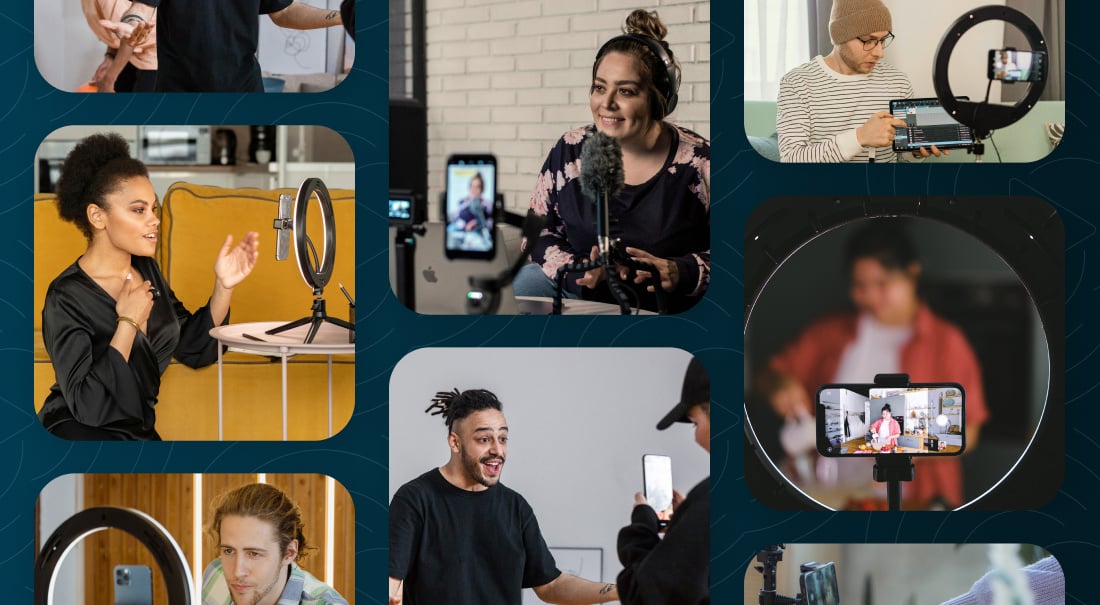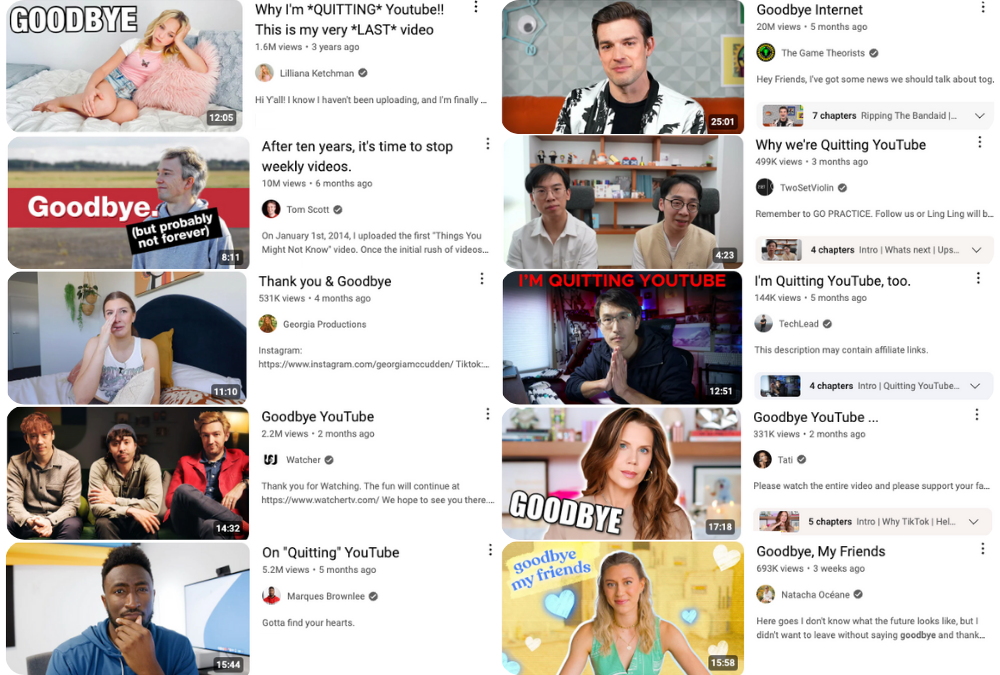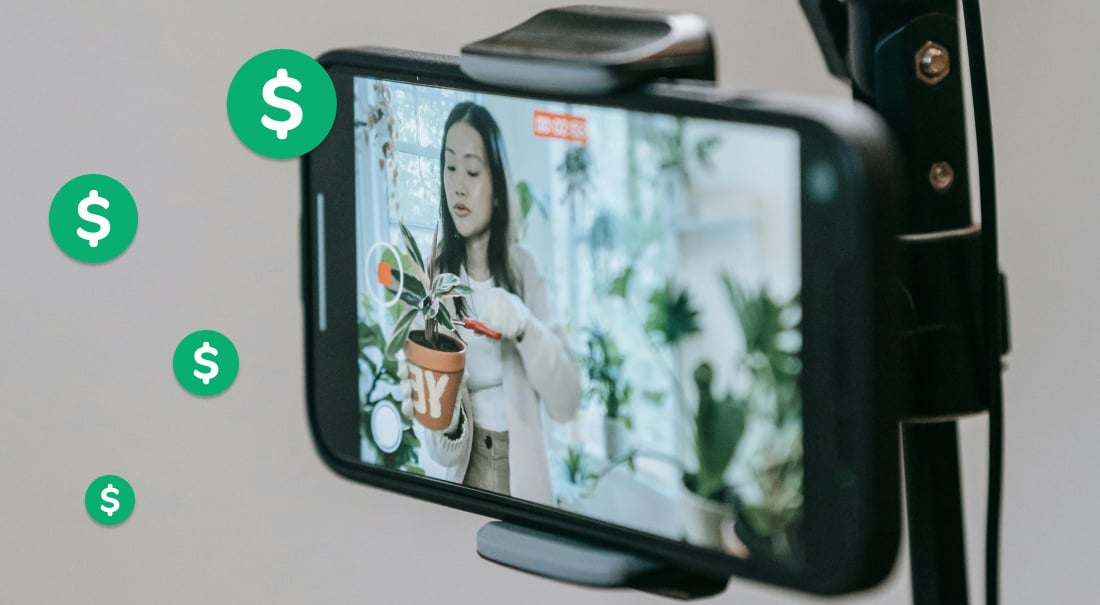
Since its launch in 2005, YouTube has become the go-to destination for video creators and their audiences.
And for good reason: Many video creators have found success with YouTube channels. Growing an audience, turning hobbies into side hustles, and side hustles into full-time creative careers — even building entire media companies. And, of course, there are the lucky few who’ve made millions from the platform’s monetization features.
Huge audiences, creative freedom, limitless opportunity? It sounds pretty good! So why are video creators leaving YouTube?
Why is everyone leaving YouTube in 2024?
OK, maybe not everyone. There are well over 2.5 billion YouTube users in 2024 after all.
But there’s no question that video creators choosing to leave YouTube — at least partially — is a growing trend. And this is a big deal, because until recently, YouTube has been the obvious choice for creators wanting to make video a livelihood.
So what’s at the root of this? Why does it seem like everyone is leaving YouTube in 2024?

Turns out, there isn’t a simple answer. Of course, each video creator choosing to leave YouTube has unique and personal reasons. However, there are a lot of common themes.
-
YouTube has changed considerably over the years, and certain aspects of the platform are causing increasing frustration among creators.
-
“YouTuber” is a relatively new profession with a unique set of professional frustrations that creators are navigating in real time.
-
And let’s not forget that YouTube doesn’t exist in a vacuum: The evolution of the creator economy and the emergence of new platforms are part of the conversation as well.
So let’s explore some of the big contributing factors to help explain why creators are leaving YouTube in 2024. First up: What’s changed on YouTube?
The algorithm
One of the things you hear a lot in this conversation is a simple: “The Algorithm.” (Dun dun dun.)
It’s easy to say, but hard to explain.

If you’ve been a YouTube viewer for a while, you might remember seeing some of the few big algorithmic changes take effect in real time.
Pre-2012, the platform prioritized clicks and views. If a video got a lot of clicks, it was recommended to a lot more people. This meant the rise of viral videos (like “Yosemitebear Mountain Double Rainbow 1-8-10,” with over 51 million views).
Unfortunately for viewers, this also meant a rise in clickbait titles and thumbnails as creators attempted to boost visibility.
Between 2012 and 2015, YouTube started to prioritize watch time metrics. This was the first step towards a more refined algorithm but came with its own set of issues. Some content creators experimented with video length, filler content, and even view botting to boost visibility.
Then in 2015, the algorithm became way more complicated. (I should say “algorithms,” because different models control different aspects of your YouTube experience, like your Home, Suggested, Search, and Shorts.)

While views and engagement metrics are still important, the algorithm now monitors and acts on many more points of data. As a search engine, YouTube also considers content relevance and channel authority (which is why video SEO has become so important).
Most importantly, YouTube prioritizes personalization over general popularity, clarifying, “Our algorithm doesn’t pay attention to videos; it pays attention to viewers.” YouTube wants users to stay on their site for as long as possible, which is why recently watched content directly influences video recommendations.
And, while YouTube hasn’t overhauled their algorithm recently, they frequently make changes and adjustments to improve the overall performance.
On a platform with over 14 billion public videos and over 61 million creators, YouTubers are fighting a daily battle for relevance and visibility.
Add in the platform’s powerful, dynamic, and obfuscated algorithmic system … and it’s fair to say it’s never been harder to find — and retain — an audience on YouTube.
So, what does this all mean for creators? To put it simply: Creating content isn’t enough anymore. The most successful YouTubers in 2024 aren’t getting lucky — they’re creating a lot of super high-quality videos regularly. And on top of being content creators, they’re also content strategists, data analysts, and SEO writers.
Yep, it’s a lot easier just to say, “The Algorithm.”
YouTube monetization
Another common frustration among YouTube video creators is the platform’s approach to monetization. It can be tough to start monetizing content on YouTube and even harder to earn an income.

Here are some of the big issues for creators:
YouTube CPM
For eligible channels, the primary method of monetizing on YouTube is with ad revenue. That means creators need a basic understanding of digital advertising metrics to understand revenue.
CPM (Cost per Mille or Cost per 1,000 Impressions) is a common bidding strategy for digital advertising. That's why CPM is one of the most important metrics for YouTube creators to understand.

To calculate CPM, you divide the total ad cost by the number of views, and then multiply that number by $1000. For example:
$300 ad/50,000 views = 0.006 x 1,000 = $6 CPM
And of course, YouTube is going to take a cut. For ad placements on a horizontal video, YouTube withholds 45% of the total amount paid by the advertiser.
Knowing the CPM of ads on your videos can help you calculate your revenue, however, CPM can vary. A lot.
Some of the factors that influence CPM include:
-
What keywords the advertiser is targeting
-
Ad format
-
Your location
-
Video length
-
Your niche
-
Your channel size
-
Your audience’s age
-
The time of year
That’s a lot of variables, which is why it feels darn near impossible to get a clear answer as to what video creators can expect to earn (even if they’re creating within a “profitable niche”). With so many variables, it’s difficult even to pinpoint an average YouTube CPM, as statistics show they can range from as low as $0.02 to as high as $36.36.
Plus, a video view doesn’t equate to an ad impression. If your audience is using an adblocker or subscribed to YouTube Premium, they won’t see ads at all.
Other revenue sources and RPM
Ad revenue on horizontal video isn’t the only way for YouTube creators to earn from their content. Of course, Shorts is a popular new format on the platform, but YouTube has also introduced Channel memberships, YouTube Premium revenue, Super Chat, and Super Stickers.

All of these revenue sources factor into RPM, or Revenue Per Mille. This number indicates how much a creator is earning from all of their revenue sources, per 1000 video views on their YouTube channel.
What does all of this mean for YouTube creators?
Unless your YouTube channel is regularly making so much money that you never have to worry again for the rest of your life … your channel revenue is going to be a concern.
To maximize earnings, YouTubers need to have a revenue strategy (on top of their creative production and content strategy skills). But even with a solid revenue strategy, the lack of predictability in earnings can cause stress and frustration.
YouTube’s terms of service
Aside from navigating the algorithm and monetization frustrations, video creators on YouTube also need to adhere to YouTube’s terms of service and suite of policies.
YouTube’s TOS is increasing frustration for creators because policies are often erratic and unclear — but violating these policies can have serious impacts on video performance and channel success.
How YouTube’s TOS impact creators
Limiting video features and visibility
When videos are ”close to the removal line or could be offensive to some viewers,” YouTube can remove certain features (such as likes and comments), reducing visibility. For other violations, YouTube can mark the content as “private” until the creator can determine and address the cause of the restriction.
Age restriction
A common complaint for creators is YouTube’s age restriction policy. YouTube has identified some general content themes considered inappropriate for under-18 audiences, which disproportionately affects content creators within certain niches.

If YouTube marks a video as age-restricted, the content is demonetized and the thumbnail is blurred. Most importantly, it can't be viewed by anyone who isn’t signed into the platform and over 18 — that means any age-restricted video embedded on an external website won’t be viewable.
Content removal, strikes, and channel deletion
YouTube can remove content that violates community guidelines and issue a “strike” against the channel. A strike limits the actions that a creator can take on their YouTube channel (like publishing new videos). If a creator racks up three strikes in a 90-day period, their entire channel will be permanently deleted.
Monetization and demonetization
In addition to community guidelines, eligible creators also need to adhere to a set of monetization policies that includes Google’s AdSense Program policies, “advertiser-friendly content guidelines,” and avoiding “repetitious content.” Because of this, even inadvertently violating YouTube’s TOS can impact a video creator’s bottom line.
The real issues with YouTube’s TOS
Most content creators expect some degree of policy on a public platform. So the existence of YouTube’s terms of service, community guidelines, and monetization policies is not the cause of frustration for video creators. Here are the real issues:
Frequent changes applied retroactively
YouTube is open about the fact that their policies can change. However, the frequency of policy updates can make it difficult to stay on top of changes, and policies are enforced retroactively.
This was a big deal to creators in 2023, when a new profanity policy resulted in the abrupt demonetization of huge backlogs of uploaded content.
Violating YouTube’s TOS can directly impact content delivery, performance, and monetization opportunities, even for videos that have previously been acceptable.
That makes for a high-pressure situation for video creators.
Lack of clarity
While writing this article, I spent a fair amount of time sifting through YouTube’s TOS, community guidelines, monetization policies, and ad-friendly content guidelines. Terms of service can be tough to parse in general, but these rules are extensive.
In other words, there is no “quick and easy checklist to avoid violating YouTube’s TOS.”

On the contrary, individual policies are broad and nonspecific. That means policies like “shocking content,” “controversial issues,” and “enabling dishonest behavior.” If you want specifics, each policy is supported by a (non-exhaustive) list of examples.
In the ad-friendly content guide, examples are divided into categories of content that
-
Can earn ad revenue
-
May earn limited ad revenue, and
-
Cannot earn ad revenue
In other words, the rules as-written are not black and white, which makes the next point really important.
Automated enforcement
YouTube uses machine learning algorithms to enforce their policies. That means computer programs are detecting patterns to find and penalize violative content. Unfortunately, creators are often left without clear communication about what exactly in their content was flagged.

Whether reviewed by a team of humans or a combination of humans and AI, nonspecific policies paired with devastating punitive action is a recipe for frustration. And because YouTube’s content review process is ambiguous and inconsistent, it can lead to feelings of unfairness or favoritism.
Overall, many creators are left feeling like their time would be better spent creating content for a platform where they have more control.
Creator burnout
As you can see, YouTube is a very different platform now than it was ten years ago. There are more creators, more channels, more content, and more rules. This highly competitive landscape also means more video creators are experiencing burnout.
In 2024, successful YouTubers aren’t just creating videos. They’re researching their audience, defining a niche, and growing a brand.
Then they have a great idea, write a script, produce a super high-quality video, make sure it’s ad-friendly, create an eye-catching thumbnail, write an SEO-optimized title and description, and publish.
And then they do it again.
YouTube rewards consistent, frequent publishing schedules, and so do viewers. This relentless demand for new videos is one of the reasons creators talk about being stuck on the “content treadmill.”
Alternatives to YouTube
Video creators aren’t just leaving YouTube because of changes on the platform. Although YouTube is a powerhouse in video hosting and streaming, it’s not the only option for video creators anymore. While no one platform can fully replace YouTube, there are a lot of alternatives depending on what you want to do.
Discoverability
One of the biggest benefits of YouTube (especially for new creators) is discoverability. Because it has a ton of users, it offers the opportunity to grow an audience from the ground up, especially if you’re creating niche content.

However, social media platforms like Instagram and Facebook are still strong contenders if you’re looking for a big social platform with a lot of users. TikTok is a go-to for younger audiences especially, and even Pinterest is a great platform for finding an audience.
Hosting
Rather than hosting video content on huge platforms like YouTube, more creators are choosing to embed video players on their own websites. This approach offers the benefit of keeping all of your content in one place, and giving creators more ownership and control over their content appearance and functionality.
Streaming
YouTube Live is a big-name live streaming destination, but it’s not the only one. Many streamers are choosing to stream to Twitch, TikTok, Instagram, and Kick.

And as with hosting, there are many platforms that allow creators to live stream directly to their domain. If you’re using streaming to support discoverability or community building, reaching multiple platforms at the same time is a smart way to reach a wider audience.
Monetization
Most of the big social video platforms offer ad monetization options similar to YouTube, but monetization doesn’t stop there. Even creators who aren’t breaking with YouTube have been supporting their ad revenue with platforms like Patreon and Buy Me A Coffee. For video creators who are hosting their content on their websites, platforms that offer integrated paywalls or subscription services are also popular.

Whether through tipping or recurring monthly subscription fees, creators can earn more directly from their audiences — and better anticipate their revenue through more stable recurring payouts.
What’s next for YouTube?
Few of the video creators “leaving” YouTube in 2024 are abandoning the platform entirely. More commonly, video creators are taking a step back from their channels, either by producing different kinds of content or diversifying their approach to video monetization.
Moving forward, many content creators will see YouTube as a stepping stone rather than an end goal. The platform is still a great way to experiment, grow an audience, or find a niche before moving content to your own platform.
It’s also likely that many will continue using YouTube as one part of their business model. Alongside other social media platforms, video creators can use YouTube to support marketing, awareness, and engagement, without relying on the platform for revenue.
Whatever the reasons, this trend signals a new era for YouTube and for video creators (and we couldn’t be more excited about the future).
If you want more articles like this in your inbox every week, drop your email in the box below! If you’re looking for a platform that supports your entire video workflow — from creation and streaming to hosting and monetization — try Switcher free for 14 days.
Subscribe to the blog
Sign up to receive notifications whenever a new blog post is published. You may unsubscribe at any time.

Share
About the Author

Maddie is a writer and curious content marketer with experience in nonprofits, advertising, and tech. As Switcher’s content strategy manager, she’s passionate about connecting with our audience through content that educates and inspires.
All posts by Maddie Tong


